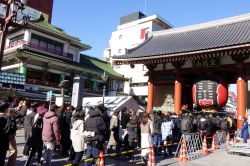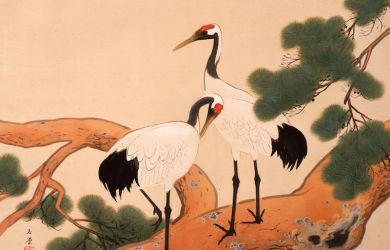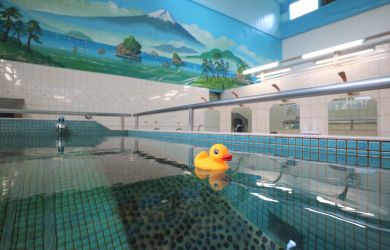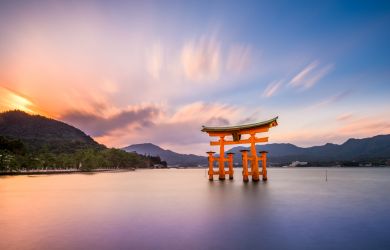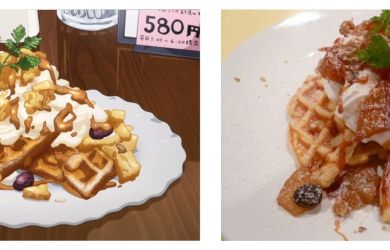
Rich in natural umami, katsuobushi is the smoky shavings of skipjack tuna (katsuo), also called bonito. It’s used for making dashi, the basic stock for many Japanese dishes; and when sprinkled over takoyaki or okonomiyaki, it dances in the steam from the hot dishes. Freshly shaved katsuobushi sprinkled over a bowl of hot rice is the main dish at Katsuo Shokudo, a rising star in the food world.
It was 9am and I was queuing at Katsuo Shokudo reading a Japanese book on seafood to learn more about the fish and its flakes. There were about a dozen of us in line and the businessman in front of me asked if I had any questions about katsuo. We exchanged business cards and I was surprised to see that he was the president of a large katsuobushi company in Kanagawa. He extended an invitation to visit their facilities and I reflected on the fact that just standing in line at this restaurant, I was meeting a katsuo mover and shaker. The president waited but eventually had to drop out of line for a scheduled business meeting. I couldn’t believe it. Even katsuo industry people are patiently standing in line to dine here.
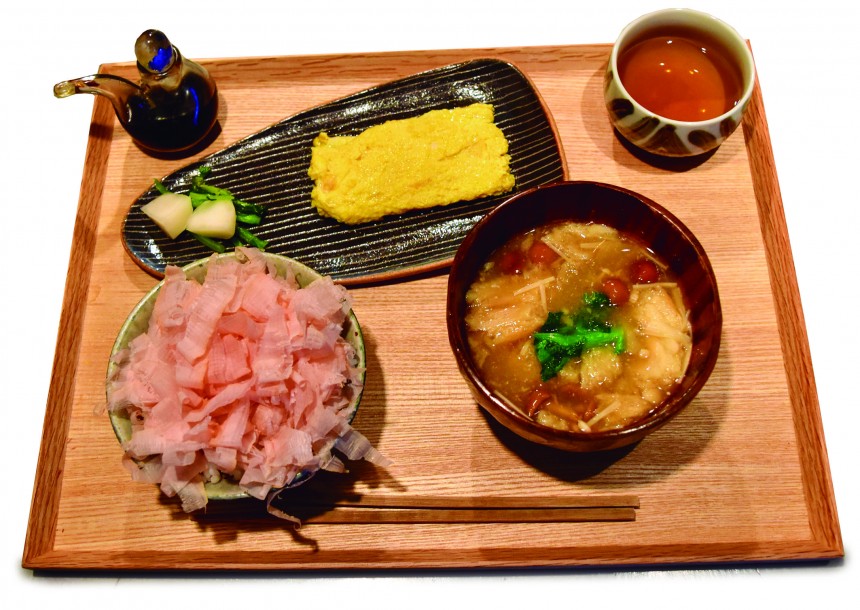
A waft of smoky katsuobushi greets you as you enter the restaurant. There are eight seats at a counter that becomes a bar in the evenings. Photos of katsuo are taped to the wall. Behind the counter, the energetic Mai Nagamatsu is busy shaving dried and smoked filets of katsuo in a special shaving box.
The menu is simple: there’s katsuo meshi gohan (¥800), a bowl of rice with katsuobushi, rice bran pickles and miso soup; or katsuo shokudo gohan (¥1,000) which is the same meal but also includes tamagoyaki (rolled egg). Diners also have the option of adding a raw egg (¥150). If there is still some rice in your bowl, you can request an oigatsuo for a small second portion of more freshly shaved flakes. There are about four to five different types of katsuobushi available for selection — the flavor changes depending on how it was caught (line or net), where it was harvested and how it was processed.
Nagamatsu is a whirlwind behind the counter, jumping from task to task be it explaining the different katsuobushi to choose from, shaving the hard filets, or being in the kitchen making tamagoyaki. The box she uses to shave the smoked and dried filets has clear sides so that diners can watch the delicate flakes glide down. They are large, the presentation impressive and Instagram-friendly.
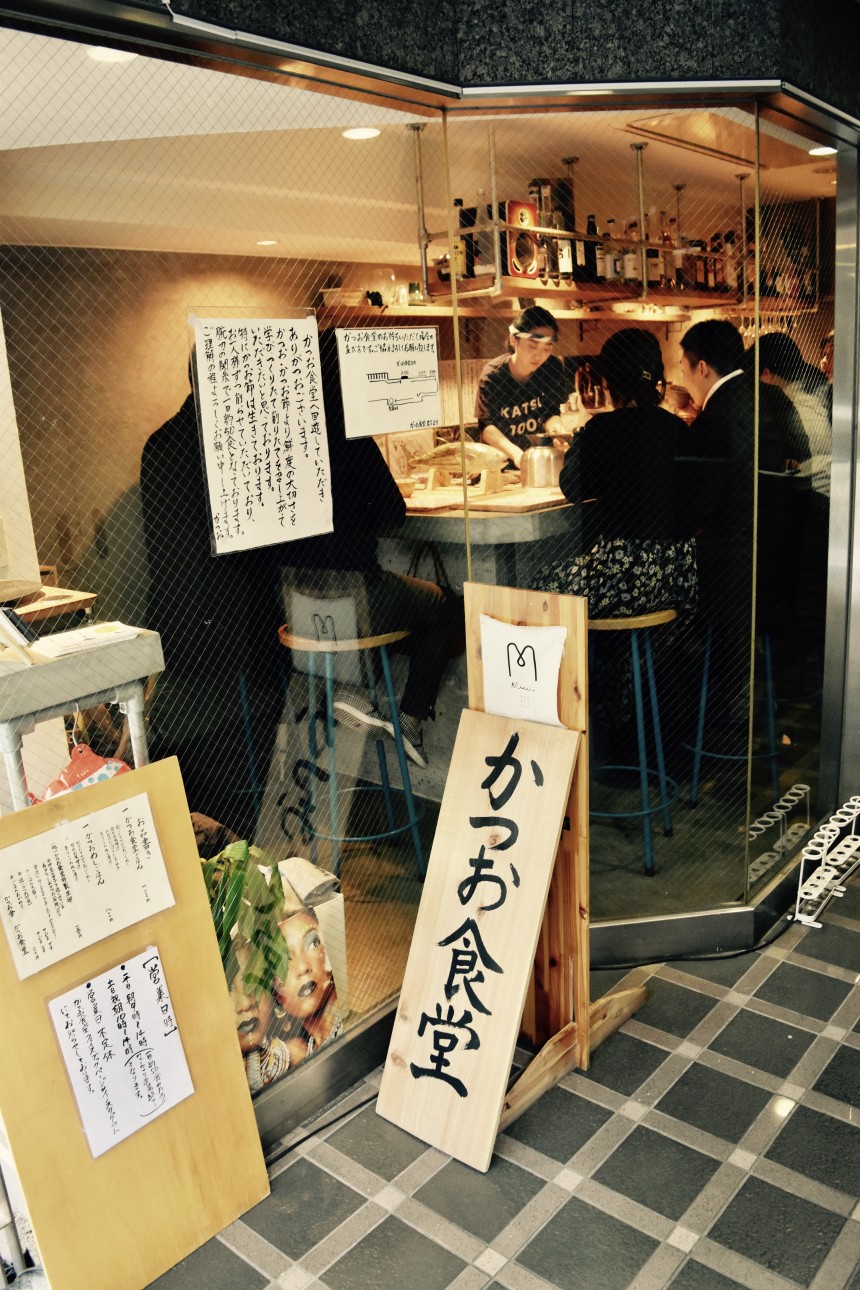
There are several photo books on katsuobushi that she hands out to customers. We all pass these around amongst each other, like students at a katsuo cram school listening to every word Nagamatsu has to say as she talks non-stop. She used to be a bit of a party girl, but after leaving Tokyo for a while and returning home she witnessed her grandmother shaving some fresh katsuobushi and became enamored. This simple act sparked a fire in her heart and changed her life. Nagamatsu then traveled around the country visiting katsuo fishermen and learning from katsuobushi producers.
We had a short conversation and I mentioned that I go to Tsukiji Market several times a month. She asked if I was familiar with the katsuobushi shop Obayashi Shoten (6-26-8 Tsukiji, Chuo-ku), adding that Akiko Kawanami at the shop makes the fluffiest katsuobushi at Tsukiji. I wasn’t familiar and now had a great second connection. I went the following week and realized that this shop is on a quiet backstreet that I rarely visit. I did pick up some of its wares: delicate and light flakes.
It’s no surprise that Nagamatsu is a media darling and her story is covered on many television shows as well as in Japanese print. Her passion for katsuo is palatable and the concept for her restaurant works. She’s even dyed her hair green like the fish.
Katsuo Shokudo opens at 9am on weekdays and 10am on weekends and holidays. The restaurant closes after about 50 people have been served, which is usually about 2pm. The only warning is that the line moves very slowly, so bring a book for the wait. It’s a good, only-in-Japan meal and a delight to meet Nagamatsu in person.
